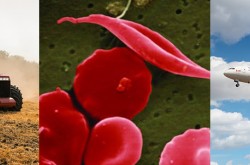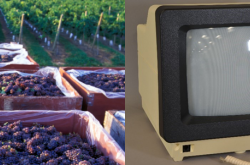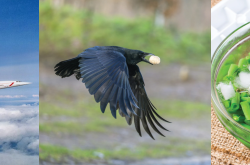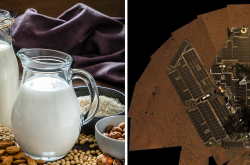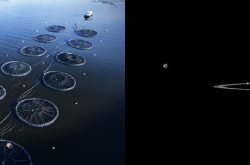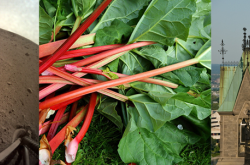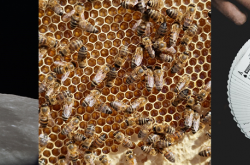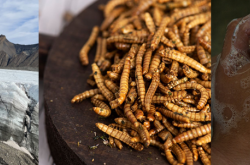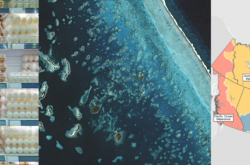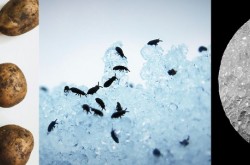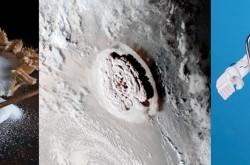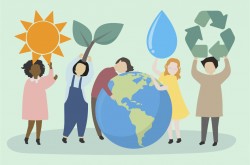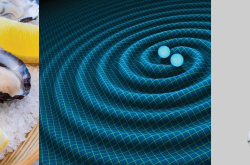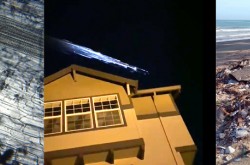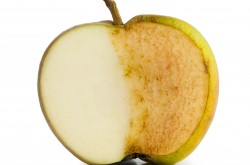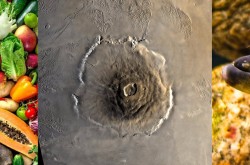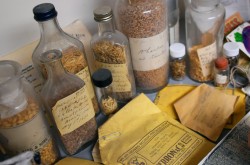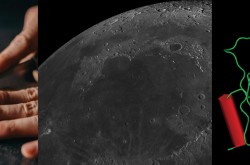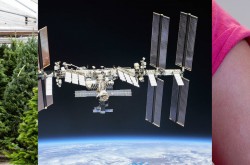3 things you should know about kelp, nutrients, and astronaut food

Meet Renée-Claude Goulet, Cassandra Marion, and Michelle Campbell Mekarski.
They are Ingenium’s science advisors, providing expert scientific advice on key subjects relating to the Canada Agriculture and Food Museum, the Canada Aviation and Space Museum, and the Canada Science and Technology Museum.
In this colourful monthly blog series, Ingenium’s science advisors offer up three quirky nuggets related to their areas of expertise. For the March edition, they dive into a sea vegetable called kelp, the six categories of nutrients for good health, and a competition called the Deep Space Food Challenge. Hope you’re hungry!
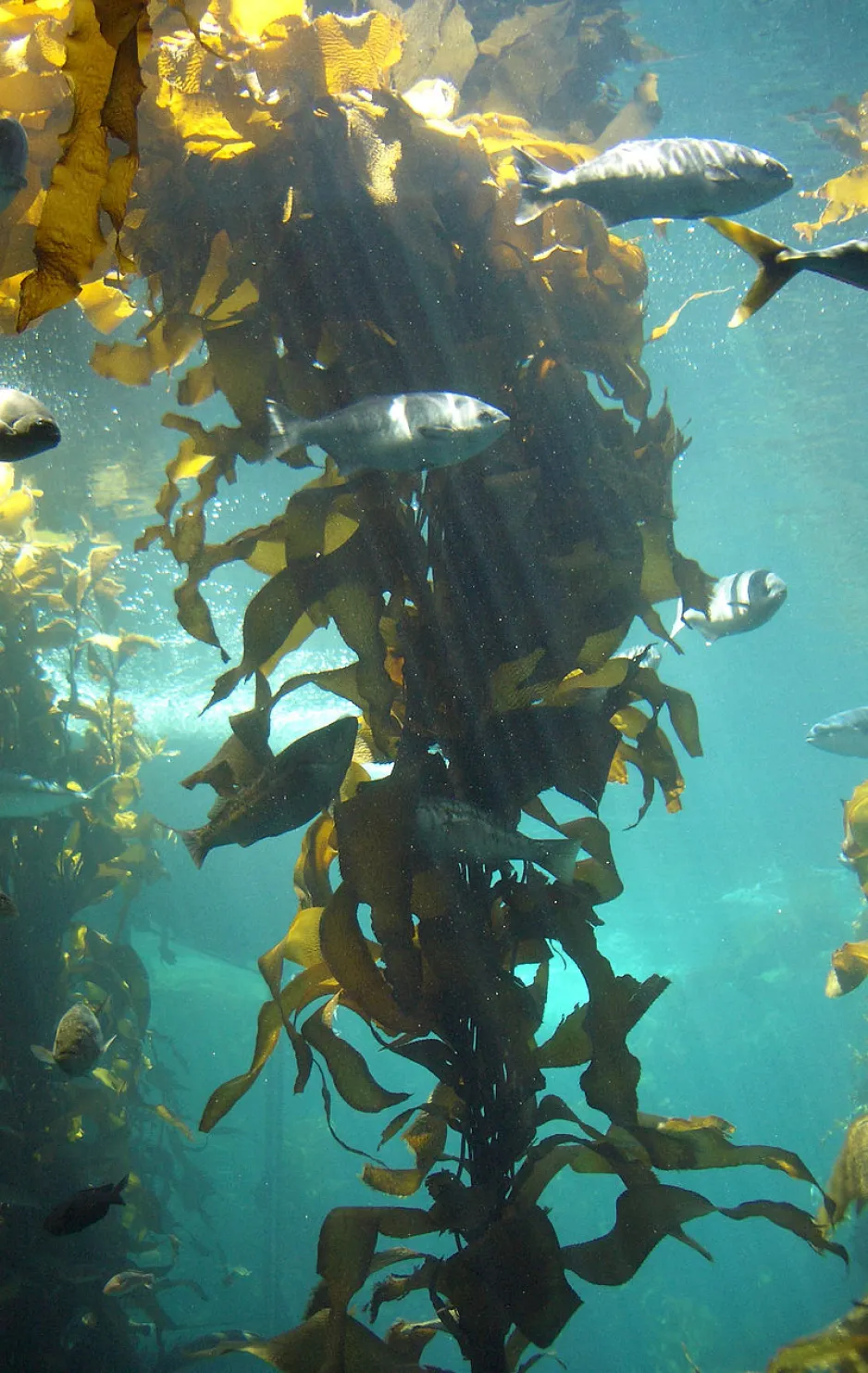
Kelp forests provide a habitat for many marine species.
Move over kale, kelp is in the house!
Kelp is one of many types of edible seaweed. Though it is common in Asian cuisine, it's new to many Canadians, and far from a staple food for most. But its potential as a "superfood" and an environmental saviour just might make it the next big thing.
Although it resembles a plant, kelp is actually brown algae, which is neither a plant, an animal or a fungi. We find wild kelp forests worldwide, in shallow, cool, and nutrient-rich coastal waters. Now, seaweed farms are starting to pop up in coastal waters of Canada and around the world, in part due to our growing understanding of how to propagate and grow kelp, and our desire to preserve kelp forests. For fishing communities, kelp offers an opportunity to complement other seasonal activities such as lobstering, or to transition away from fishing completely. It grows fast, it’s a high-value crop, and it’s multi-functional.
As a "sea vegetable," kelp packs a nutritional punch. It's a great source of potassium and of iodine, an element essential for keeping our thyroids healthy. It is packed with vitamins and minerals, gut-healthy fiber, and is very low in calories. We might not be aware of it, but we already eat kelp. For example, we commonly use sodium alginate — a kelp extract — as a thickener in foods such as salad dressing and ice cream. Researchers are also investigating using kelp as nutritional additives or replacements in our prepared foods, such as bread. There is also evidence that by adding it to food for dairy cows, farmers may be able to help their cows produce less methane!
Even if it doesn't catch on as food, kelp offers major environmental perks. Farmed kelp grows on ropes in the water and can recreate habitats for marine wildlife. Grown off the coast, it also has the power to clean our water by soaking up nutrients from agricultural run-off, which eventually gets into the ocean. And due to its rapid and large growth, it has that coveted carbon-sucking capacity, making it a tool in our arsenal against ocean acidification and climate change. What's more, it can be used as fertilizer on farms, thus closing the nutrient loop and helping provide nutrients and organic matter to our soils.
Will kelp follow in the footsteps of kale, from underdog to king? First, Canadians must open up to the idea of a taste of the ocean in their plates. Obstacles to adopting new foods come from not knowing how to use the ingredient, or our palates not being accustomed to the new textures and flavours. But looking at the trajectory of the seaweed farming and processing industry, the science and technology research supporting this new venture, and the many opportunities at bay, we can only expect this industry to keep flourishing — if not for human food, then as an environmental boon!
By Renée-Claude Goulet
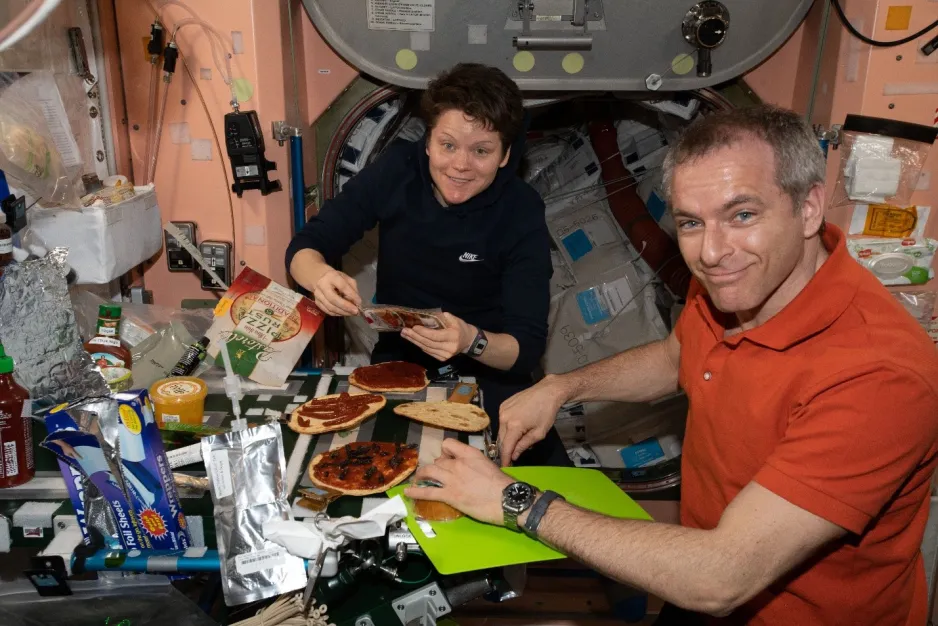
Astronauts David Saint-Jacques and Anne McClain prepare pizzas in the ‘kitchen’ onboard the International Space Station during Expedition 59 in March 2019. This is one of the few task-heavy meal options.
The Deep Space Food Challenge: Help feed our future astronauts
In preparation for long-duration human missions to the Moon and Mars, the Canadian Space Agency and NASA have launched a competition dubbed the Deep Space Food Challenge. The aim is to develop new technologies to produce food for future space missions, technologies which may also benefit remote, hostile environments on Earth — such as Canada’s northern communities. The products of such a technology must be both nutritious and palatable, while also using very little energy, water, and material.
Astronaut food has certainly come a long way since its humble beginnings. In the early 60s, Cosmonaut Yuri Gargarin and American John Glenn fed on pureed meat and applesauce, with each food packed in aluminium toothpaste-like tubes. From the Apollo days to the International Space Station (ISS) stays, the menus had to improve as astronauts spent more and more time in space.
Foods onboard the ISS must be lightweight, compact, nutritious, safely stored at room temperature, non-crumbly (in fact, preferably wet and sticky), and flavourful! One’s sense of taste is reduced in space, so it takes more spice to pack a morale-boosting punch. Shelf-stable foods are either irradiated, freeze-dried, dehydrated, or thermostabilized. Natural foods like nuts are available, as well as fresh fruits and vegetables that must be eaten right away, as there is no refrigeration onboard. All foods are prepared and packaged to be ready to eat. Some meals require rehydration with water, and can be heated in a small oven. All beverages are consumed directly from a bag, with a special straw.
Loose food particles, like bread crumbs, are a big concern for getting into instrumentation, contaminating the air or getting into an astronaut’s eyes. Even salt and pepper are served in liquid form! Tortillas — rather than bread — are a menu staple, used for everything from peanut butter to a hamburger.
Canadian astronauts eat off of the NASA menu, from which the shrimp cocktail is a famed favourite. Canadians also get to supplement their menu with personal selections. For example, astronaut David Saint-Jacques brought smoked salmon, maple cookies, and some of his wife’s homemade chili (dehydrated) into space. As a rule, cookies must be eaten in one bite.
Roscosmos has its own menu. That said, even at meal times the ISS is an international collaboration. Astronauts from all nations have mealtime together and are encouraged to share personal and cultural selections, which is good for both comradery and menu variety.
To date, a variety of food experiments have been conducted onboard the station to determine which plants thrive in microgravity. Most recently, radishes were harvested from an environmentally controlled growth chamber called the Advanced Plant Habitat. Previous successful crops include lettuce, Chinese cabbage, lentils, and mustard.
To boldly go where no human has gone before, we have to invent food production systems that can be used in space. Will your idea be part of the solution?
Go further
For more details on the history of food in space, check out “I was eating on the Moon one day, in the merry, merry month of July” by Ingenium Curator Rénald Fortier.
By Cassandra Marion
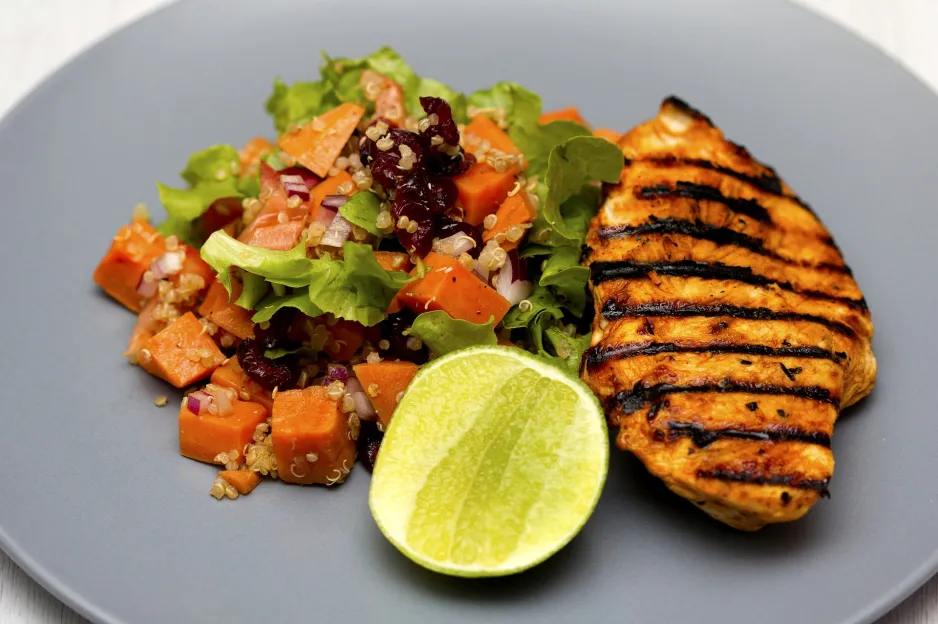
What’s on your plate? Does it contain all six of the important nutrient groups needed to keep you healthy?
Nutrient know-how: The ingredients for good health
Many of us struggle to decipher the advertising on food labels. Phrases like “packed with essential nutrients” or “excellent source of vitamins!” seem good, but what do they actually mean?
It comes down to the molecules that form your food. Your food contains molecules called nutrients, which your body needs to survive, grow, and reproduce. They are the ingredients our bodies use to create new cells, to generate energy, to fight disease, and much more!
Nutrients are generally divided into six categories: carbohydrates, proteins, fats, vitamins, minerals, and water. The first three (carbohydrates, proteins, and fats) are your macronutrients, or ‘macros.’ These molecules are needed in large amounts by your body because they are broken down to provide energy. They also provide the building blocks your body needs to grow, repair itself, and create new molecules.
- Carbohydrates are molecules made of sugars. They are your body’s primary fuel source, and act as building blocks for larger molecules. Carbohydrates are found vegetables, fruits, and grains.
- When your body digests the proteins found in meats, nuts, and beans, the protein molecules are broken into smaller pieces called amino acids that your body uses to create new proteins. These include proteins like antibodies, certain hormones, and the proteins that hold your cells together.
- The fats found in dairy products, nuts, seeds, oils, and meats may have a bad reputation, but they are very important. Not only do they provide energy, they also surround organs, regulate temperature, and form the membrane of every cell in your body.
Vitamins and minerals are critical to survival, but are considered micronutrients since they are needed in smaller amounts. Unlike the macronutrients, they do not provide energy directly. Instead, they act more like tools, enabling many of the processes in your body to occur.
- Vitamins (including vitamin A, D, K, and C) are essential organic molecules for many reactions in your body, such as making new cells, breaking down food, and maintaining a healthy immune system.
- Minerals (such as potassium, calcium, magnesium, and iron) are solid inorganic substances. They are used in a huge variety of ways, including building your body (e.g., bones and teeth), regulating some of your bodily processes (e.g., muscle contraction), and being a part of chemical reactions (e.g., digestion).
Finally, there’s water. Some nutritionists classify it as a macronutrient because we need a lot of it, but since water doesn’t directly provide energy, others leave it out. Either way, water must be consumed in large quantities. Our bodies are more than 60 per cent water and without it, nothing could be transported in our bodies, reactions wouldn’t happen, and our cells would die.
The word ‘nutritious’ means ‘something that nourishes.’ That means that by eating and drinking from the six nutrient categories, your body will be well on the way to optimal functioning and health.
By Michelle Campbell Mekarski











